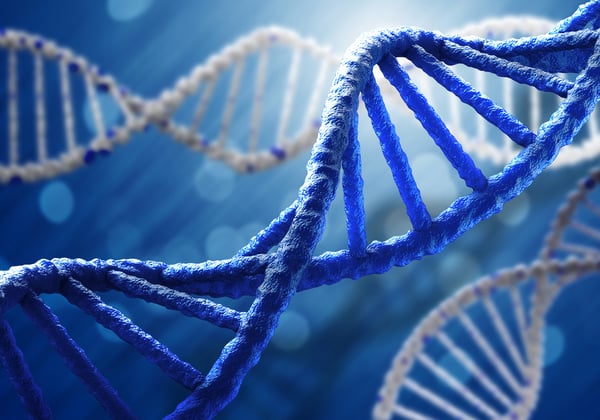Mutagen
What is a Mutagen?
A mutagen is defined as any chemical or physical agent that has the ability to permanently alter a victim’s DNA. This can lead to harmful consequences, often increasing the rate at which cells mutate, and usually causes some form of cancer.
A common example of a mutagen in the workplace is ethylene oxide. X-rays, radioactive substances, and ultraviolet rays are also common mutagens. Mutagens can be broadly categorized into three types:
- Physical
- Chemical
- Biological
 Mutagens have the ability to permanently alter a victim’s DNA, and should be regularly checked and reported.
Mutagens have the ability to permanently alter a victim’s DNA, and should be regularly checked and reported.
Types of Mutagens
Here’s a detailed description of each of the three types of mutagens.
Physical Mutagens
Physical mutagens often include energy radiations, including X-rays and gamma rays. The sudden release often causes a spike in temperature and can result in physical injuries.
First reported in 1927, neutrons, gamma rays, and X-rays all have the potential to permanently alter the body’s genetic material. The damage they cause to the nucleotide structure could, in extreme cases, turn out to be fatal.
Another physical mutagen is temperature within the environment. The sudden increase in temperature in the surroundings causes hydrogen bonds within the genetic material to break apart. Exposure to extreme heat doesn’t just result in physical injury; it can also cause debilitating long-term effects.
Chemical Mutagens
Alkylating agents like methylhydrazine, temozolomide, busulfan, and ethyl sulfate are just some of many examples of chemical mutagens.
Exposure to these agents can cause permanent damage to an individual’s DNA, often resulting in prolonged gaps within the DNA and rapidly increasing the rate at which cells ionize.
Base analogs are another example of chemical mutagens. Common examples include bromouracil and aminopurine.
Biological Mutagens
Biological mutagens often include viruses and infections (which may ultimately lead to a virus). For instance, HIV is a biological mutagen. It infiltrates the DNA strands, replacing the proteins with viral proteins.
This causes the DNA to replicate the viral protein instead, causing it to spread rapidly throughout the body. Apart from viruses, bacteria in the environment may also result in DNA damage.
While viruses and bacteria are popular biological mutagens, there’s one other that organizations need to account for — transposons. They can affect gene functionality, and can even alter the structure of chromosomes, resulting in abnormalities.
What Effects Can Mutagens Cause?
Mutagens can cause various harmful effects on the body, including:
- They alter the body’s genetic material, causing issues with cell transcription or replication
- Mutagens can affect the stability of chromosomes, often resulting in breakages or rearrangements
- Over time, the rise in the frequency of mutations may eventually cause long-term, debilitating illnesses, such as cancer
- There’s also the risk of aneuploidy, which can affect the number of chromosomes within a cell, often leading to genetic disorders
Mutagen vs. Carcinogen
Both carcinogens and mutagens exist in the environment, and it’s imperative for employers to identify, report, and take measures to limit or eliminate exposure. However, it’s also equally important to understand the difference between the two.
As mentioned above, mutagens affect the genetic material, such as the DNA, in the body, often leading to heritable disorders, and may result in cancer.
Carcinogens, on the other hand, are substances or agents that can cause cancer. Some carcinogens are naturally occurring, such as the presence of UV rays in sunlight.
Others, such as carbon monoxide or harmful fumes, are man-made. Like mutagens, carcinogens affect DNA within cells, causing them to mutate rapidly. They often result in tumours, which is abnormal growth and eventually spreads.
Reporting Obligations for Employers
Employers have strict reporting obligations when dealing with the presence of mutagens in the work environment. It is the employer’s duty to ensure that they identify all carcinogens and mutagens in the workplace, including any incidences of exposure to employees.
Certain mutagens may be classified and labelled specifically, providing a warning to employers. As per Regulation 9 of RIDDOR: employers are required to report any cases of occupational cancer, including diseases caused by exposure to biological agents.
Employers are required to prepare reports, including reasonable evidence showing the exposure to specific agents that might be the likely reason for the disease.
Use EcoOnline to Improve Chemical Safety in the Workplace
EcoOnline’s Chemical Safety Software makes it easy for organizations to register and keep track of chemical exposures, and allows them to prepare comprehensive reports outlining best practices for chemical compliance.
The software makes it easy for employees to understand the risks and follow safe handling practices to reduce exposure to mutagens in the workplace. Companies can record any instances of exposure and take remedial steps immediately to prevent any serious harm to its employees.